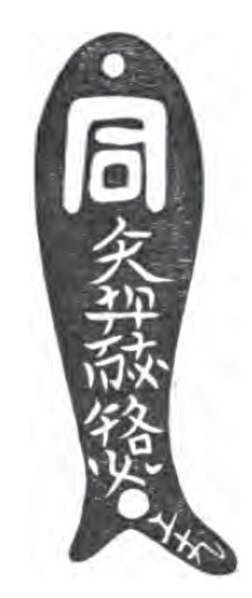The Khitan small script was one of two writing systems used for the now-extinct Khitan language. It was used during the 10th–12th century by the Khitan people, who had created the Liao Empire in present-day northeastern China. In addition to the small script, the Khitans simultaneously also used a functionally independent writing system known as the Khitan large script. Both Khitan scripts continued to be in use to some extent by the Jurchens for several decades after the fall of the Liao dynasty, until the Jurchens fully switched to a script of their own. Examples of the scripts appeared most often on epitaphs and monuments, although other fragments sometimes surface.
Bronze mirror with a poetic inscription
Inscription on the Da Jin huangdi dutong jinglüe langjun xingji (大金皇弟都統經略郎君行記) stele, in both Khitan and Chinese.
Bronze 'fish tally' with small Khitan inscription owned by Stephen Wootton Bushell
Traditional Chinese characters
Traditional Chinese characters are a standard set of Chinese character forms used to write Chinese languages. In Taiwan, the set of traditional characters is regulated by the Ministry of Education and standardized in the Standard Form of National Characters. These forms were predominant in written Chinese until the middle of the 20th century, when various countries that use Chinese characters began standardizing simplified sets of characters, often with characters that existed before as well-known variants of the predominant forms.
The east square of Guangzhou railway station in 1991. Traditional characters are prevalent in various brand logos, including 健力宝; 'Jianlibao Group', 飄柔; 'Rejoice', and 广东万家乐; 'Guangdong Macro'. Only 海飞丝; 'Head & Shoulders' is using simplified characters in their wordmark.
Job announcement in a Filipino Chinese daily newspaper written in traditional Chinese characters





